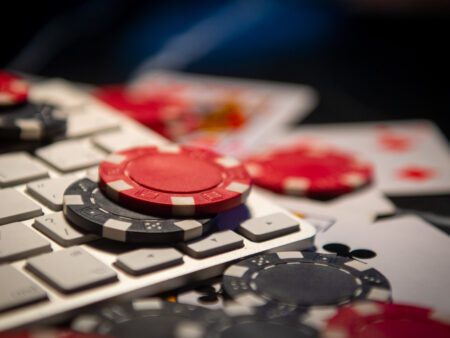Understand how to effectively use psychology in poker to read your opponents. Learn the importance of ‘Poker Tells’, and how to master these skills.
Mastering Poker Psychology: How to Read Your Opponents
Years back, I found myself face-to-face with a formidable poker opponent. His glacial gaze pierced through my confident facade; it felt as though he was reading my strategic playbook with each blink. This encounter led me to ask myself, ‘Can psychology really play a significant role in poker?’ Turns out the answer is a resounding yes, perhaps more than you’d think.
Studies suggest that up to 85% of communication is nonverbal. This insight becomes crucial when we shift the scene to a poker table- where your body language can surprisingly be a far louder broadcast of your strategy than your best poker face.
First Stop: Identifying Poker Tells
‘Did she just blink twice? Why is he drumming his fingers? Wait, did she just subconsciously glance at her chips?’ As bewildering as it may seem, these tiny gestures, termed ‘Poker Tells,’ play a significant role in understanding your opponents’ moves. They’re like Morse code in a stormy sea of deception. The key to cracking the code? Observation and practice, my friends!
Deciphering The Art of Non-Verbal Communication
In poker, the first rule of thumb in deciphering non-verbal communication is this – Consistency is often deceptive. Poker players, especially seasoned ones, are aware that their body language can easily expose their strategy. So they resort to what we call the ‘Reverse Tell’ – intentional false signals to lead you astray. Clever, right?
That’s where the skill of ‘Baselining’ comes into play. It’s essential to observe your opponents when they’re not in any challenging positions. This allows you to note their natural state, providing a reference point for any changes in their behavior during the game. Would you believe I once won a game just by noticing an opponent’s irregular tapping on the table?
Learning the Language of Chips
Ever noticed how players handle their chips? Well, it’s not all just show. Their chip stack and how they manage it can reveal a lot about their style. An organized stack often indicates a strategic and cautious player while a messy one might hint at an aggressive, risk-taking temperament.
And let’s not forget – the way players bet can also be a tell. A player who hesitantly puts in a big bet might not be as confident as they portray. On the flip side, an aggressive bet can quite possibly be a bluff! It’s all about identifying the discrepancy between their action and their intent.
Tapping Into Table Talk
The words spoken at the poker table aren’t just idle chatter. They can be a treasure trove of information if you listen carefully. Who is trying to steer the conversation and why? What are they trying to divert your attention from? This poker ‘chatter’ is a strategic game in itself.
Remember, my fellow poker players, the winner isn’t always the one with the best cards, but the one who best reads the other players. So step away from focusing solely on your cards. Look up, observe, listen, and delve into the fascinating world of poker psychology. After all, it’s not just a card game; it’s a human game.
And while you’re mastering poker psychology, why not take a look at another thrilling aspect of the casino world? Check out this engaging article on online vs offline roulette that will surely enhance your gaming experience.










